The Best Kept Secret in High Schools
Jared Taylor: Welcome to the American classroom, where we discuss the role of education and building an American society. I'm Jared Taylor with my host, Lindsey Crosland, and we're excited here to visit with Dr. EJ Anderson from Rio Salado on the topic of dual enrollment. So let's begin.
Dr. Anderson, you've been in education for a little while. Tell us a little bit about your background and what you've done in education.
Dr. E.J. Anderson: I'd be glad to. I'm really excited to be here. I love to talk about dual enrollment. So my background is, I'm a first generation college student really. Except I come from a family of 11 and I'm number 10. And so my oldest sister, the first, she paved the way.
And so by the time I came around, it was an expectation to go to college. And so I went to college and I studied journalism. And I worked as a reporter for a number of years, and I loved it, but I also had five kids, and I realized that education had a profound impact on kids and sometimes it wasn't always positive.
Sometimes it was, but it did have a profound impact on kids and students, especially, and I decided I covered education as a journalist, but I decided I wanted to be on the other side and make some of those decisions and have some impact on the impact education had on students. So they then worked on my master's in educational leadership, graduated the same year my youngest daughter graduated from high school, and then I worked on my doctorate, and I have been in education in dual enrollment for a good number of years now, and I love it.
Jared Taylor: That's great. We want to dig into dual enrollment. I always like to know the history of something, so I went back. I don't know, a couple months ago, and I said, where did this whole idea come from? And most of the country doesn't call it dual enrollment. I found out they call it concurrent enrollment.
Yeah, it's concurrent. And I guess Joliet College in Illinois, is that who started the basic idea of concurrent enrollment, dual enrollment in the U. S.?
Dr. E.J. Anderson: Yeah, it was back East. It was mostly in Connecticut that first started the first program. And I used to be on the national the board of NACEP, which really focuses on concurrent enrollment and dual, and they would always be there.
And they would always talk about it.
Jared Taylor: Wow, the original college, they're still doing that.
Dr. E.J. Anderson: Yeah. But, Rio Salado college where I work was the founding member of in Arizona for dual enrollment. So we started in 1987, but we were the first college to do dual enrollment in the state.
Jared Taylor: Okay, so for our listeners some probably know what concurrent enrollment is or dual enrollment.
Many probably don't. And we're throwing it we threw out NACEP. They might not know that. Let's start by defining some terms so people know what we're talking about here.
Dr. E.J. Anderson: Okay, so dual enrollment is where you take college classes. At your high school with your high school teacher who has been qualified to teach college, and he teaches the curriculum and the course competencies for his college class.
The best thing about it is you get high school and college credit at the same time. Now concurrent is what they call it across the country, but that is what we call dual enrollment at Rio Salado and in Maricopa Community Colleges. Some of our other community colleges in Arizona also call it concurrent.
But at Maricopa, a concurrent means your high school student taking the class at the community college. And so we do have concurrent and dual, but high school students take, when they're in their high school, they're taking dual enrollment. And that's what Heritage has.
Jared Taylor: That's great. Okay.
So the word dual means they're enrolled in two schools, high school, college.
Dr. E.J. Anderson: Yes, and that's a really important difference because I will have a parent call me and say , my student was in the class. And I said, he was in the high school class and enrolled in the high school class. But to be dual, he has to be enrolled, admitted and enrolled in the college class.
Which means he has to go through the whole registration process. And that's a big big, important fact to remember.
Jared Taylor: Okay, good. Now let's also define NACEP because that's an important distinction. One of the reasons why I know Heritage Academy wanted to partner with Rio Salado versus some of the other choices that.
Dr. E.J. Anderson: Yes, so NACEP was organized to support concurrent or dual enrollment where students get college credit while they're in high school And it's called the national alliance of concurrent partnerships So that's where the concurrent comes from but that's what I said Most of the country calls it concurrent enrollment.
Jared Taylor: And I know early on you and I both have mutual friend, Dr. Vernon Smith, and I got a new year's card from him the other day and his family's grown up and beautiful. I think he still lives in Virginia back there. So Dr. Smith, if you listen to this, we miss you. Come back to Arizona. Very visionary individual that really helped Ignite the dual enrollment engines in arizona.
And he don't know, two or three years ago. And my mind just was not open to it. I don't think I had my brain wrapped around it. And then somebody else, an Arizona state legislator, getting Rich Crandall was talking to my dad about, he's you got to figure this out. This thing called dual enrollment.
And we started looking into it and I'm like, Vernon, you need to come back and talk to us about this. Cause I think I missed what you were telling me. But what do you think people misunderstand most about dual enrollment? We're going to talk about the benefits, but I think we probably need to debunk some myths or what people miss in this space too.
Dr. E.J. Anderson: I think one of the biggest myths is students or parents will think they're going to have to do more work and it's going to be something that they can't do. Typical dual enrollment class is taught at the college level, but it is with their peers. It's with the high school teacher who is qualified to teach college, but they typically have more seat time.
So it doesn't go at as fast as pace and so students think I'm going to have to do more work. No, the reality you're doing the same work. So the student who's sitting next to you and doesn't get admitted and enrolled in Rio Salado or the dual enrollment class doesn't get credit where you do. And I get that all the time.
I was in the class. No, you have to sign up. So the work is the same, and I think that's the big myth. The other big myth I think people have is that students aren't ready for college classes. But students across the country have proven that most of our students, a good top third, or maybe even two thirds of the students are ready to do college work, and they really benefit from having that exposure to a college curriculum.
Jared Taylor: Yeah, and I've seen some of our young people say, oh I'm not college bound. I can't do that. And they just don't think about it. And then when you take, say, just give me 15 minutes to explain this with their parents. They're like, oh, wait a minute. I can do that. And then they immediately say no, I can't because I can't afford it because college is too expensive and that's not me.
I'm a first generation American citizen. Actually, there's a way for you to benefit too.
Lindsey Crosland: Okay, so do the dual enrollment classes cost the same as if I'm entering college?
Dr. E.J. Anderson: Yes, they do. Yes, they do. It is a community college price, though, which is really good and really important is community college price.
But there are ways to get into dual enrollment. And so if students based on financial need, last year we awarded $380, 000 to students based on financial need and this year, the Arizona State Legislature also added some money. And so students that were freshmen and sophomores could get up to $300 for dual enrollment on top of the Maricopa grant. And they could get $600 if they were juniors and seniors.
So we see most of our students who really can't afford it can't afford it. And most of those students the research has shown the best thing you can do to get a student prepared for college is to put them in a college class. So those first generation students, they learn how to navigate college. Which can be a challenge to understand the college rules, how to study, how to prepare. They have better GPAs and they get better jobs. They are more likely to graduate. There are all kinds of wonderful benefits from those students taking that dual enrollment class.
Lindsey Crosland: Yeah, I think college or university attendance can seem, intimidating to a lot of high school students. So it makes sense that if you're, if I'm taking English 100 as a junior or senior, If I just concurrently enroll in that class, and obviously the teacher has to be certified to be teaching concurrently, and then I enroll, make sure I'm enrolled in the community college, then I'm getting credit for both of those, and I don't have to take English 100 or 101 again in a year or two years. I've already taken it, and I have the college credit. And then I'm already a college student, and so it's a little less intimidating to, I think, continue for some.
Dr. E.J. Anderson: It does, it really makes a difference. And let me just tell you a little story that I would like to illustrate it. My daughter took dual enrollment in high school, she loved it, had no problem with it, but her senior year, she had half a day and there was a class that she needed to take. That wasn't offered at the community college. She's very independent, very self confident. So I signed her up for the class at the community college.
The first day of class, she calls me, I'm at work. She's in a panic. Mom, what do I do to get to class? And I'm like, you drive there, you go to your class. She could not do it. My husband had to go, drove in front of her. Parked by her, walked in front of her because she couldn't walk together, and pointed where her class was.
And so this is the kind of thing that we get those students prepared for, because navigating college can be hard. Figuring out what classes to take, how many credits, it's very difficult. So this does really reduce that intimidation. The other thing is we have to remember, it's a community college price.
And so our price is $97 a credit. You're going to pay three times, four times that much for a class at a state university. So if you can get the savings of time and money, and then you learn skills that you need, like I said, I always call it the best bargain there is. It's a two for one. You're never going to get a better bargain than dual enrollment.
Jared Taylor: That's a big deal that, that I hope our listeners, some light bulbs are going off. That if you're not familiar with dual enrollment, because really the two big barriers for higher education is accessibility. How do I get there? You're sitting in the class already right now and affordability, right?
How am I going to pay for this? And because there are so many needs based scholarships, those people that are first generations. Benefit tremendously from that and heritage has seen that quite a bit, especially in the communities where we have a lot of first gen college students.
Dr. E.J. Anderson: Let me tell you a story about my vice president.
He's first generation college. He told us that the first time he set set foot on campus, he walked all over. He went to admissions advising. He went home. He couldn't even get enrolled because it was so confusing and so complicated. And our students trying to get admitted to the college, they have those challenges, but we're there to hold their hands.
They have their teachers. They have their counselors. Heritage has high school career counselors that help them. It makes a tremendous difference. So even if they don't get their associate degree, they get those credits. They have learned to navigate. How to get enrolled, how to look at a course schedule understand credits.
You ask a high school student what a college credit is, they have no idea. So this is tremendous information that they need, especially those new students.
Lindsey Crosland: And I feel like any high school student across the nation, if they can just take one or two or three classes concurrently, then they are ahead of their peers in credits going into college. And that's going to save them time and money to get their degree.
Dr. E.J. Anderson: The research shows, yes, if they take even one class it impacts them and especially for your career and technical education students who don't think they're ready for college or are college bound, they can take one class. The research shows it impacts them tremendously. They understand hey, maybe I can do college. And they learn how to navigate it. So it is really important. They across the nation they will say 15 credits, 15 credits really put you on that path for success. And 15 credits is really three classes.
Jared Taylor: And you can't stop now, right?
You gotta just keep going and get to the 60s, so you get your associates. And I like the mindset change also. So many schools talk about, we're college prep, we're college prep. And what that, the programs you to think of is, oh, after high school, then I might go to college. It's this, throw it over the wall mindset and some people in the K 12, some school administrators in the K 12 space, think throw it over the wall.
And we're gonna talk about AP versus DE as well 'cause that's an age old argument and we should debunk a few myths there too. But the AP mindset is still throw it over the wall and we're gonna take these AP IOUs and see what we can get for 'em. But dual enrollment changes that to say we're not preparing to go to college.
Because we're in college now, it's college now, it's not college later. And that's a big deal when they realize, oh, I am a college student. It gives them confidence in their educational pursuits. It gives them the ability, a little bit of tailwind oh, wow. I was talking to a friend of mine the other night and I said, I'm really surprised that your twins are getting their associates.
They were giving their teachers a lot of really hard times. And he goes, yeah, we are too. He goes, but when they got their 15 credits, then they saw the light at the end of the tunnel. They're like, why not? Let's go get that associates. And these were adopted out of the foster system. And it is the success story up and down the line and it's changing their family history and their parents couldn't be more proud, but the confidence it gives these young girls it's amazing. I don't know. DE has really changed their trajectory in life more than anything else in their academic pursuit.
Dr. E.J. Anderson: We see that all the time. We see students that are struggling. They don't see the reason or why they need to be in school. Once they get focused on a dual enrollment class and they realize, I'm a college student. It gives them a whole different idea of themselves.
I have another story. I had a student at a school and she was giving the principal all kinds of trouble. She wanted to drop out and she saw no reason to go. She says, so why don't you take a dual enrollment class? So she took a dual enrollment class, first generation college and she said, oh, I'm a college student, changed her completely.
She got herself enrolled every semester, got a scholarship to finish at NAU, completely changed her life.
Lindsey Crosland: It gives me the chills. I love stories like that. You know what?
Dr. E.J. Anderson: That's why I'm in this! We hear those stories all the time about the impact dual enrollment has on students. And that's why I said I wanted to work in education, but I wanted to work in education where I could really make an impact. And dual enrollment does.
Jared Taylor: It's a big deal. I remember driving a bunch of football players after they won a state championship and I had to ask him about dual enrollment 'cause I'm that, that guy , we got all the state championship stuff going and I said, are you guys taking a dual enrollment?
It was a long trip back. And he's yeah, I go, why are you doing that? He's like, why would I want to take that math class twice? I'm like, okay, if a football player can get this, right after getting knocked around for, two hours, anybody can get the benefits of this.
Lindsey Crosland: Jared can make fun of football because he was a football player.
Jared Taylor: Yeah. I'm one of those guys. I took the shots.
Lindsey Crosland: You talked about making impact personally and it makes impact educationally. Let's talk about the impact financially. So if my child wants to do dual enrollment it's interesting. A lot of programs in the state offer so many dual enrollment credits and classes that they can get their associate degree and Heritage Academy has a strong program.
Dr. E.J. Anderson: And I'll be honest. I have to say heritage has one of the most robust programs in the state. Thanks to you guys because you really work it. But I think this last year, at least two of your high schools, you had more than 50 percent of your students that were seniors, get their associate degree.
That is a phenomenal record. That is just amazing. And I can remember when we started with dual enrollment and we're thinking, okay, we got a couple of classes. Is this going to work? But in just a few years, it has grown tremendously. And like I said, last year, I was amazed the number of students earning associate degree.
Lindsey Crosland: And Jared, you can talk about the savings that equates to, but even time savings. I know a lot of our students will go to a study abroad. One semester afterward, or some of them serve a mission for their church, or there's not this pressure to hurry and get, four years of college into four years when you have a little breathing room after getting your associate degree, or some college before you leave high school.
Dr. E.J. Anderson: And if you want to play football.
It gives you a little bit of flexibility. You don't have to take as many classes. So you can play football and still ace your college classes because you don't have such a robust schedule. I had a student who went to medical school. She was the youngest student in her medical class, but her parents said because they saved $70, 000 in tuition, they said she could go on a study abroad.
And they saved that much money because she was going out, out of state to this prestigious college. But she only had two years instead of four years. So it was a savings of $70, 000. So big money.
Jared Taylor: I talked to someone here last year that had a son who did an associate's degree at the Heritage Academy Mesa campus.
And the way he did the math, and he was a math teacher. He says, so my son graduated two years early. And then he got a job in Seattle with Amazon and the job, I think, paid him about $63, 000. He's 19 years old and he says, so if you take that $60, 000 times two, that's $126, 000. He goes, plus the savings between what he would have paid ASU, he calculated about a $260, 000 economic benefit to his family.
When you start stacking up the differential in what he saved in time and money, tuition costs. There's different ways to do the math, but for that family, or any family, $260, 000, that's real money, right? Because he put that $120, 000 in his future for his son's future that he wouldn't have had he had those two years of lost earnings.
And no debt. No debt. No debt.
Dr. E.J. Anderson: Yeah we had a student one of our school enrollment students that said to he, when he was talking, he said, I've saved and he was he qualified for the financial scholarship, but he said, I've saved $50, 000 cause I have two years left at ASU.
Jared Taylor: Yeah. Big deal. And sometimes those four year scholarships might pick up those additional years if they want to roll it to grad school.
Dr. E.J. Anderson: That's right. We hear that all the time too.
Jared Taylor: My daughter's doing that. So let's talk about the D E A P debate just a little bit. We don't need to go into it too much because I think even college admissions offices don't get it. They think that AP is all that in a bag of chips because they just don't know.
They don't have a background in DE. So they write these little pieces like, oh, we prefer AP over DE because it doesn't save you time. Not, tell us your thoughts on the puts and takes there.
Dr. E.J. Anderson: I think it's changing. I think even the colleges are getting to be familiar enough now that they realize that AP isn't any better than dual.
We always say AP, dual take whatever you can to get ahead. You can use your AP credits and your dual enrollment credits, but then you need to understand your student and you need to understand your classroom. If you're really good in math and you can pass that AP test, maybe you want to do that, but it's a high stakes test.
You can sit in the classroom all year long and get an A, but if you don't pass that one high stakes test, you're done for. You didn't get the credit. But not only do you have with dual enrollment, you get that whole year to make those passing grades and the grade, you have a college transcript. For instance, if you're trying to get into a prestigious program, And you have a 4. 0 GPA in dual enrollment, you can get in first. And so that makes a world of difference too. The AP does not give you the college transcript, the GPA. And like I said, that high stakes test, you better know that you're going to pass it.
Even when I'm talking to students, like you said, the students get it. So I've been talking to classes that offer the class as AP or dual. And one student said to me, oh, I get it. You take dual for insurance. So you know, you're going to get the credit. I go, yeah, you got it. Huh. For insurance.
Lindsey Crosland: Because as long as you pass the class. You get the grade.
Jared Taylor: You get it.
And it's a transcript that you have.
Dr. E.J. Anderson: And it's a transcripted grade. Yeah. So you got it.
Jared Taylor: AP is an IOU. Now, an advantage of AP is it's cheaper. And that, that's.
Dr. E.J. Anderson: That's why we always encourage AP, but know the, your skill set. Yep. Most of the, most students are either really good in math or really good in English.
Some of them good with both, but I also tell them to ask their teacher, what's their pass rate. I've been at some schools and talked and I've asked their pass rate and they have no students pass the AP test.
Jared Taylor: And then let's assume they pass, depending on what grade they get, what score they get from the AP scores, you have to combine it.
You get, yeah, how many credits you get and whether or not the college you are applying to is willing to accept them or not. Because that's a big variable too. And a lot of people in high school don't know exactly where they're going to go or who's going to accept them and what they're going to do. You can't predict that. So to me, that's another advantage of DE is you're just giving yourself better odds to play with through that whole application and placement. But I like your approach. Do both. It's not one or the other. Yeah take both. And you'll just play with better odds going into college.
Okay so who is DE not for? Our listeners are hearing all the benefits and things, but there truly are people that don't need to do dual enrollment.
Dr. E.J. Anderson: I would disagree. I would say everybody needs to take a dual enrollment class. Even if you're not college bound, we had a student, he signed up for sports medicine class. His parents said he's never going to go to college, but he has a sports medicine certificate now.
Feels really good about it. He can say, I have a certificate and college credit. And that's what I said. C. T. E. Classes have been proven. They make the most dramatic change because you have students, a lot of students who don't think they're college brown and they changed their mind.
Jared Taylor: Good and I think you're making a good distinction because some dual enrollment credits are academic tracks and some are career technical ed track, which is great because some people that don't see themselves in college in the future, and it's true college isn't for everybody, but they can take college level career tech ed courses provided your high school has that programming and a teacher to do that.
Dr. E.J. Anderson: And you can get a certificate and a lot of people nowadays, they just want their certificate.
If you have an automotive certificate, you have a construction certificate that can make a world of difference. So I do think that you need to be at a certain level academically to take those, but that's why they have that reading test that you need to take, and it can give you an idea, but if you're in the high school class, you should be ready for the dual enrollment in that class.
Lindsey Crosland: I was just going to say if parents want to know ahead or a student wants to know ahead, I've heard the happy parts and the painful parts of dual moment, and it sounds like because I haven't gone through it with one of my Children yet is that they just have to go to the college website and enroll them as a student, and there's typically a college coach. At the high school that will assist.
Dr. E.J. Anderson: We're at the high school. We have people at the high school from Rio. And that's what he said. We hold their hands. We make sure they get enrolled. So we're telling him how to do it. We're telling them they didn't finish something. We're helping him complete it.
And then each the heritage high schools also have somebody on their staff that is working the same way. Any of the Heritage students have a real advantage because they have all that hand holding. But across the country dual enrollment is becoming more and more popular. It used to be AP, and I did my dissertation on dual enrollment, and this is how it was the research I found said AP is for the academic elite.
Dual enrollment is for the academically able, so you have a whole bigger percentage of students can, that can really benefit from dual, but that's what we hold their hands and most of the high schools across the country now have dual enrollment, and they're going to hold their hands to which you won't get when you get to college.
Jared Taylor: And I think you've made the point before that, that at least with Rio Salado, those credits are widely accepted to o I think some people say who's going to accept dual enrollment credits?
And there's some colleges and universities that do turn them down, but. That's becoming fewer and fewer. Is that what your research shows?
Dr. E.J. Anderson: You know what? I've been in dual enrollment 15 years. We have students that go all over the country. They go to Stanford. They go to the elite schools. And in my career, I've found two that wouldn't take it. And those are private, expensive schools, and they want you to pay their whole tuition and even if you talk to them, they will take a couple of classes, but they want you to take most of their classes there.
Jared Taylor: They have to match up. I think I saw an ASAP stat one time that 5 percent of the credits earned might be considered waste just from a financial standpoint. There's still value in learning and knowledge has value of itself, but in terms of transferring credits and how, cause that's a big concern that some people have as well. Am I going to need them? Are they going to be accepted? And I'll tell you my experience.
I've had two daughters who both got their associates, two associates. Thanks to Rio Salado's great program. One went to the business school. One's in the liberal arts. She's a history major. So for the history major, it is very clean. She's going to save the two years. And so she wants to do travel abroad and, things like that.
But she wants to roll that right in to a graduate degree in history so she can teach dual enrollment history. So we'll see how that goes. The other one went to the business school. Now, structurally her high school program didn't have all of the prerequisites for the business school. Cause it's just hard to get all of those lined up in a smaller program that she was in.
So she probably added another maybe a year of prerequisites that she just needed to get taken care of, which was fine. Not that big a deal. She's still saving a year. She's actually adding a whole other. She's doing a real estate minor with a an accounting major. So she's still able to have the stacking effect and the early income effect in place.
So even though there are two different paths, I don't think that there was more than maybe one class really considered waste because it actually rolled into an elective, which they needed anyway.
Dr. E.J. Anderson: They needed and we get that all the time. Is it going to count? You do need elective credit.
So that elective credit helps, but we always encourage our parents to if you're going to ASU or any you or any college Across the country look and see what you need because you can always they usually have something. They have a transfer page. A lot of them have transfer pages to Rio Salado or whatever community college you're coming from. And so you can see how your credits are going to transfer. You can also meet with an advisor as early as a junior or senior year at the state universities and find out What you need.
Jared Taylor: Yeah and the challenge is trying to get a 16 year old to know what they want to major in. At the end of the day, that's a hard thing.
And so sometimes people will criticize dual enrollment saying, oh, I wasted some money on it. How much did you do? When he gets right down to it, it wasn't that much. Not our issue, that's your issue. Because you couldn't determine what your major is. If you did that, then we'd lean that out and you'd have no waste.
Dr. E.J. Anderson: I will say the associate degree. It is all gen eds. Most of those classes are classes that everybody's going to take math, English, science, yeah, history, all those that are required. I remember my grandmother, she, my grandmother, my granddaughter, she was not real excited about taking dual enrollment.
I said, oh yes, you are. You're going to take it. Her first year of college she comes home at Christmas. She goes, oh grandma, you should have seen my roommates. They were so mad. They wanted to know why I didn't have to take all these classes. And I go, yeah. It's a good thing you listen to me, huh? So there's that story.
Lindsey Crosland: Carmen knows best.
Jared Taylor: I love that. This is great. These are fun stories. And just as we pull it together and wrap up, I hope the listeners are seeing this whole world of dual enrollment in a new light and picked up a few things about how they can benefit or their children can benefit or grandchildren can benefit.
Cause it really is something that is growing. Any last questions or anything? Now that we have Dr. Anderson here, it's a wealth of knowledge here.
Lindsey Crosland: I know that probably can't pull out national numbers, but I'd love to hear if you know in Arizona, like how many students participate in concurrent enrollment in Arizona.
Dr. E.J. Anderson: I can tell you in the Phoenix area, there's about 24, 000. So all 10 Maricopa community colleges. We have 24, 000. And Rio has 9, 000 of those per year, like right now to take dual enrollment. Yeah, that's great. And we have from freshmen all the way to seniors.
Jared Taylor: I think the state legislature has seen the light.
You talked about additional funding for students. They also put some additional funding for teachers to be eligible to teach it because that's a big bottleneck is enough teachers that have the quality college level.
Dr. E.J. Anderson: Yeah, and they're the Arizona teachers Academy. Allows teachers that are going to teach dual enrollment.
They'll pay for that education. So that's phenomenal and Jared and I, we talked a long time about that. And so it's just been the last few years that's happened. That's impact big because it didn't used to, they used to have to pay for their own. And, it's really hard when you're a teacher to find the money to go on and get your master's what you need to teach a dual enrollment.
Lindsey Crosland: Yeah, I think you mentioned that at the beginning what dual enrollment was you explained that had to be by a teacher who was certified.
Dr. E.J. Anderson: They have to have their masters.
Lindsey Crosland: So that's something I think we could reiterate for parents or students listening is that the teacher you can't just you can't just take an English class And try to enroll in the community college and be concurrent. The teacher teaching your high school English class or biotech class has to be qualified and certified through pre approved in order for it to all work.
Jared Taylor: Any last words that you have for the listeners here about de or any key takeaways that, that they should have if this is maybe the first time that they're listening to it?
We wanna give you the last word here.
Dr. E.J. Anderson: Dr. Anderson. I'm just gonna say this. I think dual enrollment really is the best bargain you can get in high school, but I also think it's that partnership and I will say heritage partnered. And because their leadership saw the benefit, they hired teachers they encourage their teachers to be qualified.
We have a lot of schools that the that's what they need. They need leadership who see that vision and the importance of dual enrollment, because that's going to make the difference. If the student wants to take a dual enrollment class, but it's not offered at the high school. There's not much they can do.
Jared Taylor: Thank you for your great impact on the families of Heritage. They love it. They line up. There's a long line for dual enrollment. It's a big draw. And we're so proud of, especially the first generation college families.
Dr. E.J. Anderson: I'm proud of them too. It's so great. It's so exciting.
Jared Taylor: And hopefully the listeners have picked out something that, that'll help them understand dual enrollment and benefit their children. If you've liked what you've heard today we appreciate you listening, taking your most valuable time to listen and learn about dual enrollment. And we'd like to appreciate Dr. Anderson for joining us here.
Dr. E.J. Anderson: Thank you. Thank you for having me.
Jared Taylor: And if you liked what you hear please rate us on Spotify or Apple podcast, wherever you listen to your podcast and follow us on americanclassroom. com. And we look forward to talking more.
Lindsey Crosland: Yeah. And I'd love to have some alumni on and talk about their dual enrollment experience and how it set them up for their future. So we'll continue the conversation.
Jared Taylor: Definitely maybe we'll have you back to talk a little bit more.
Dr. E.J. Anderson: That'd be great to see some real stories there. They're the ones that really move
you.
Jared Taylor: Thank you. Everyone have a great day.

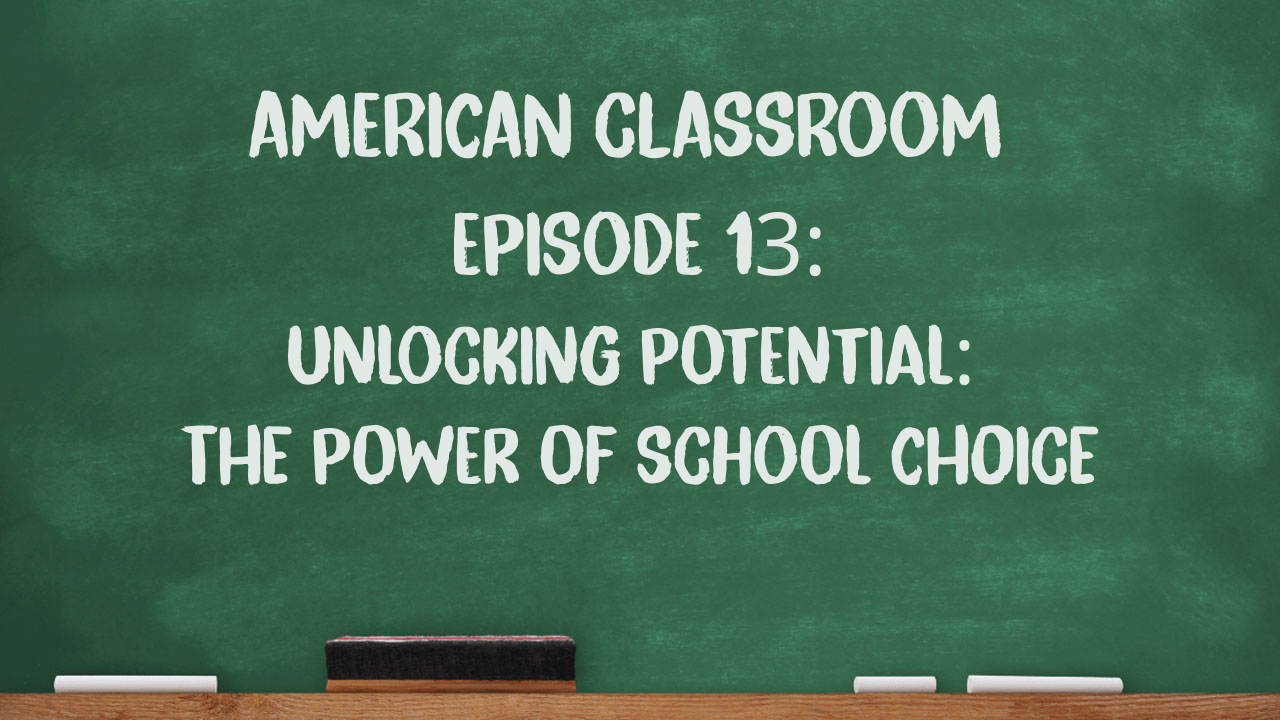


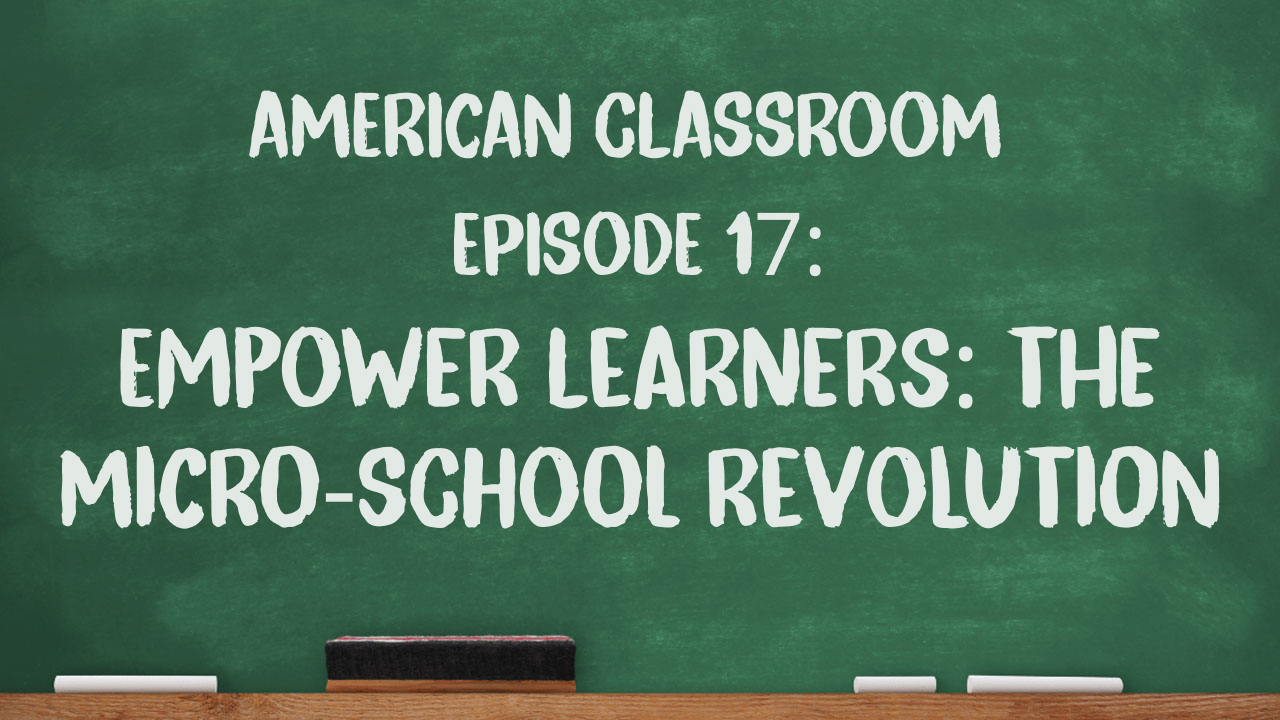
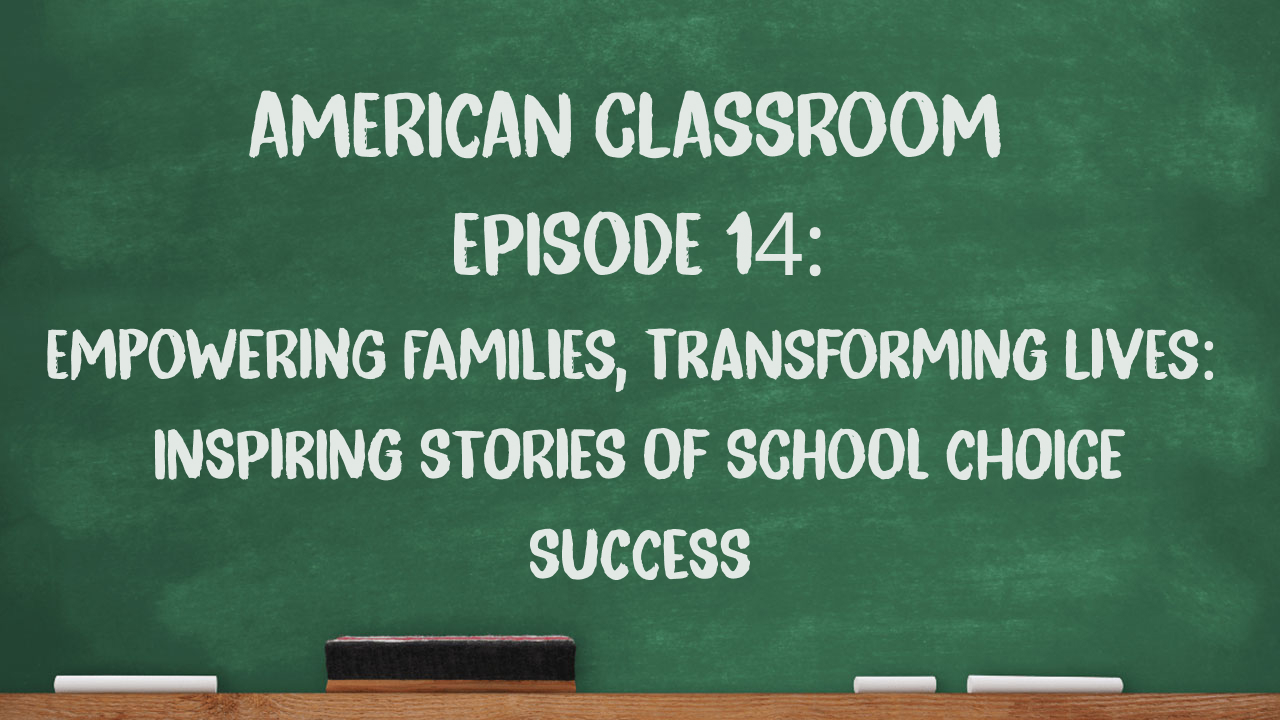


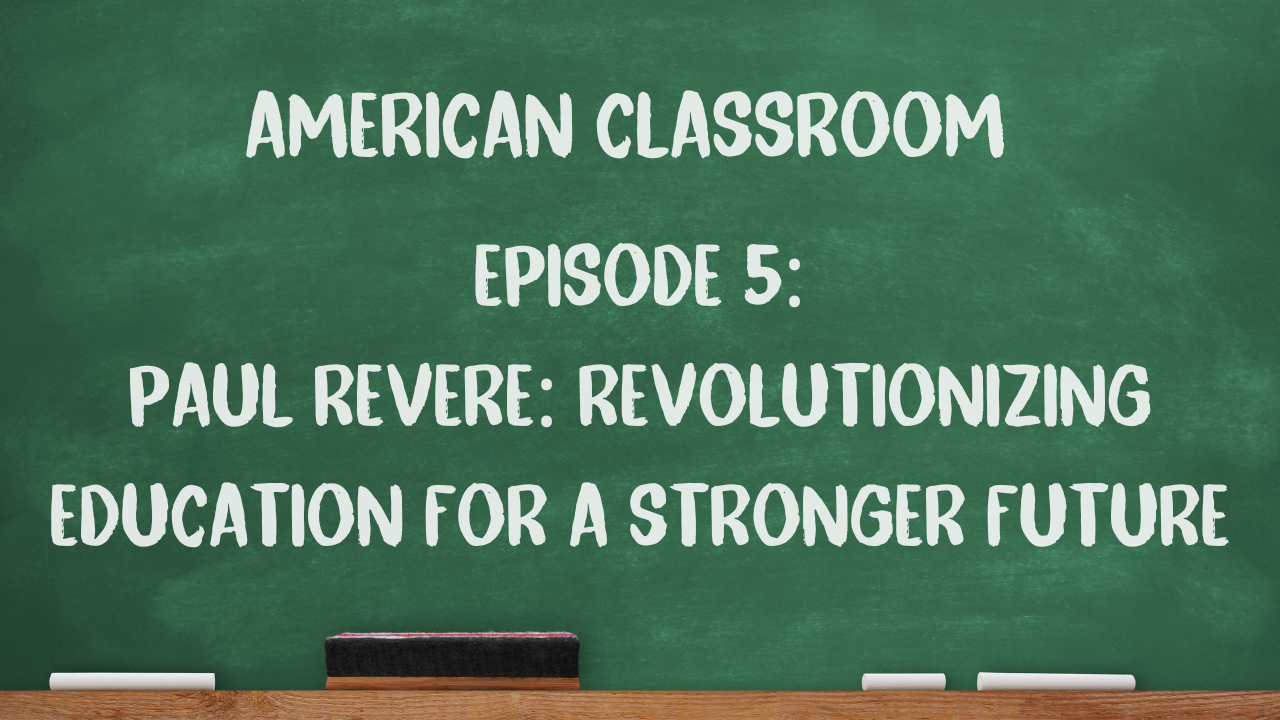
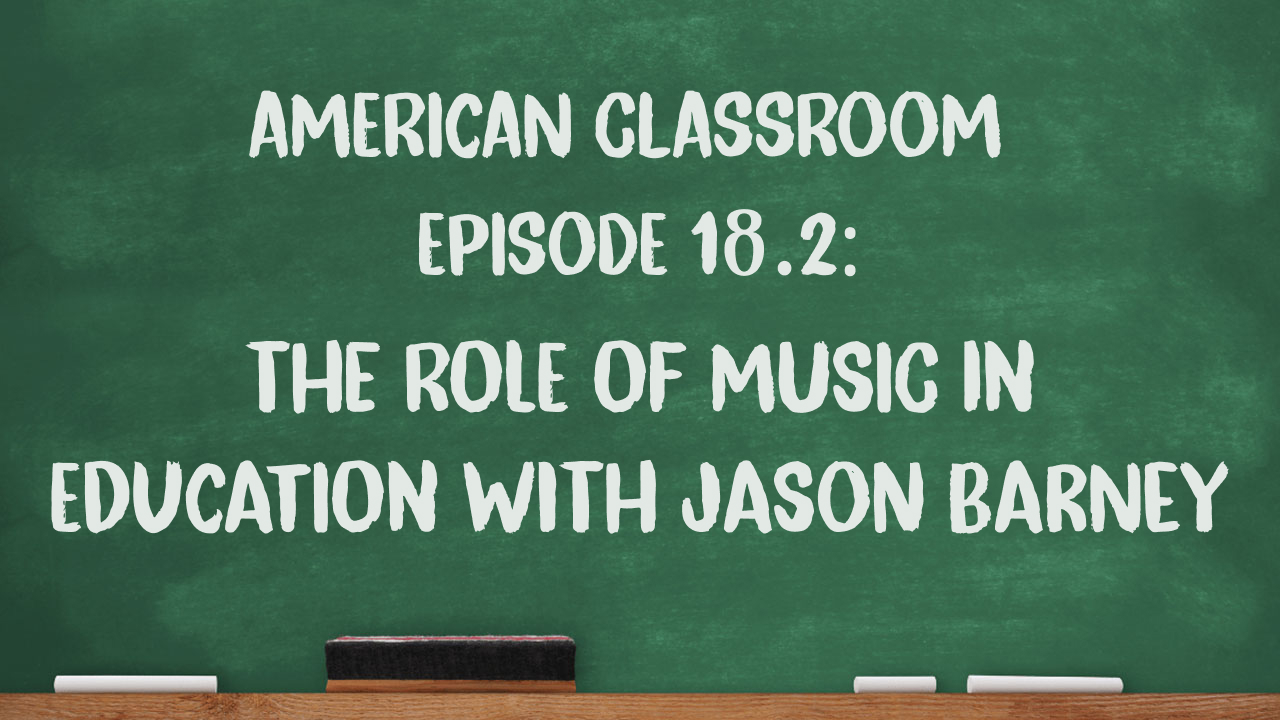
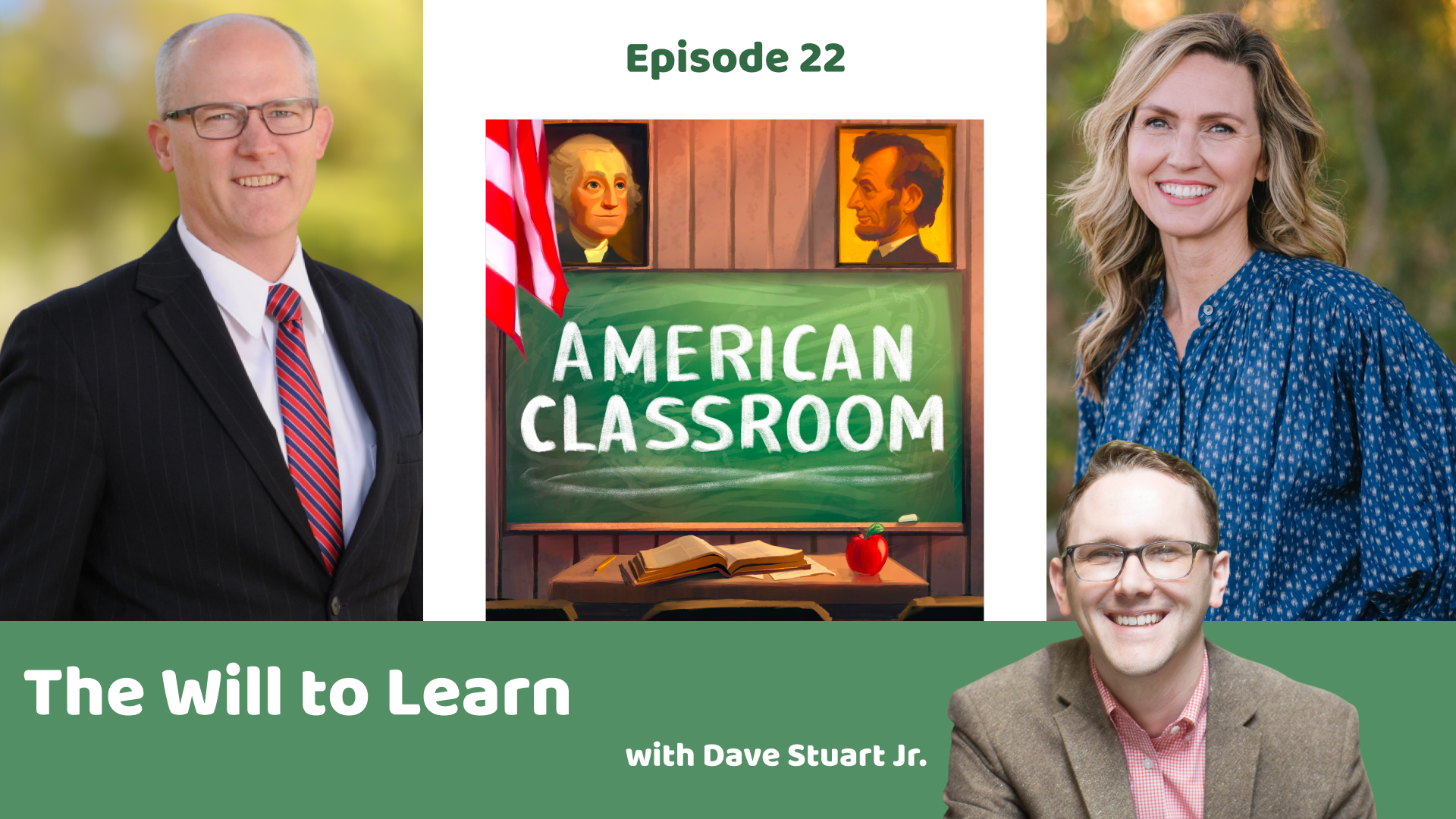

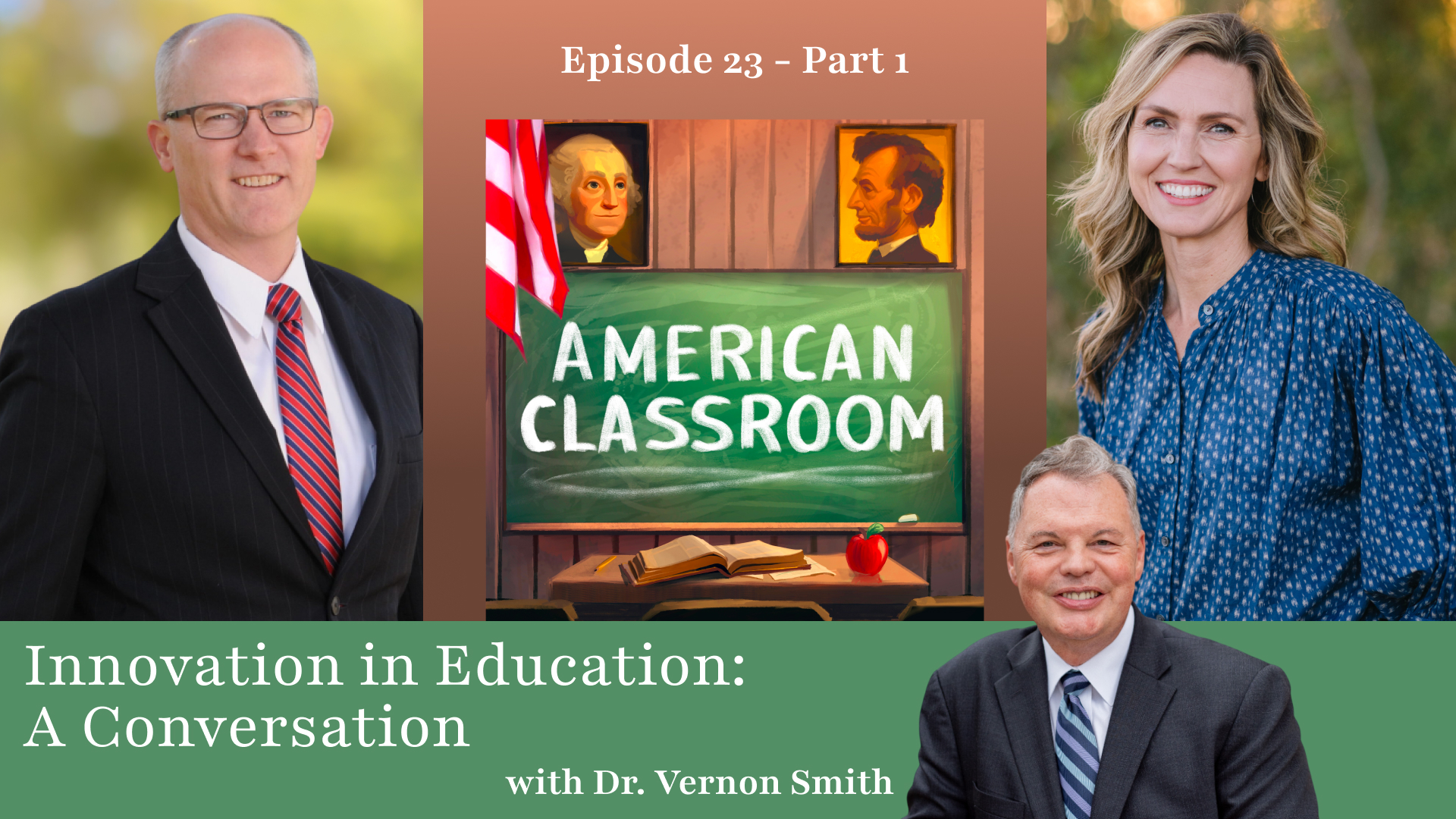

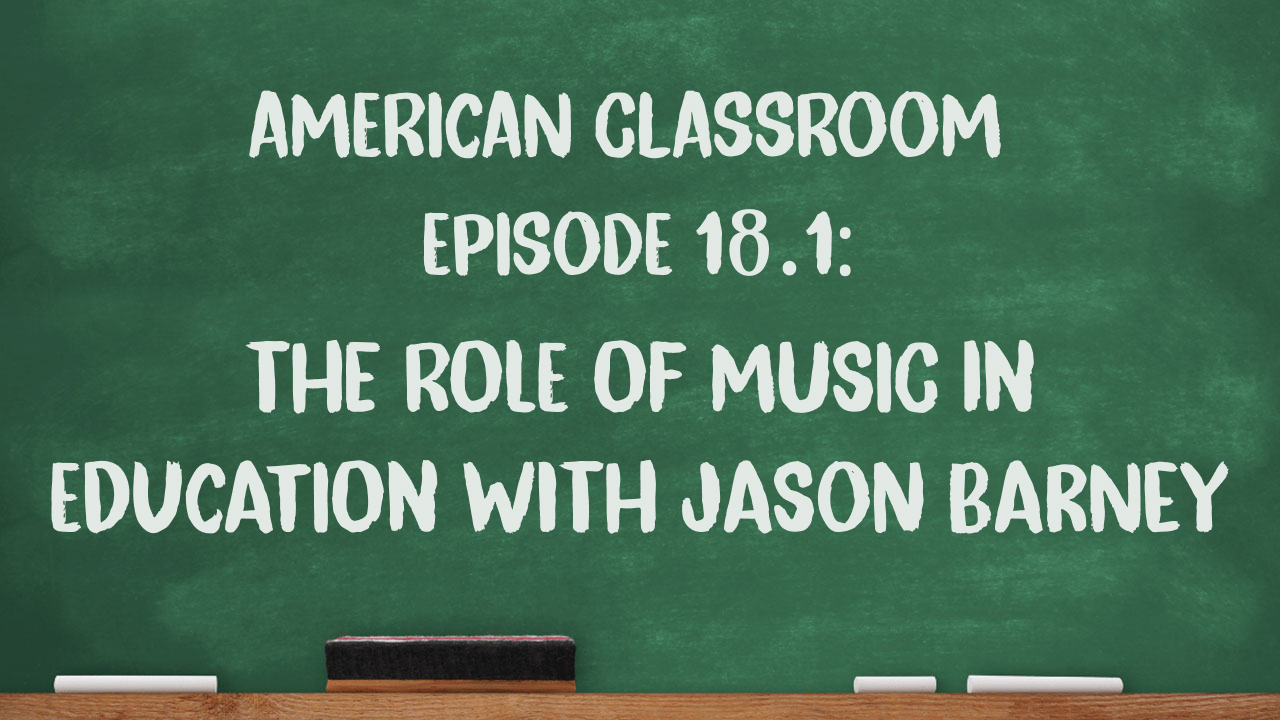
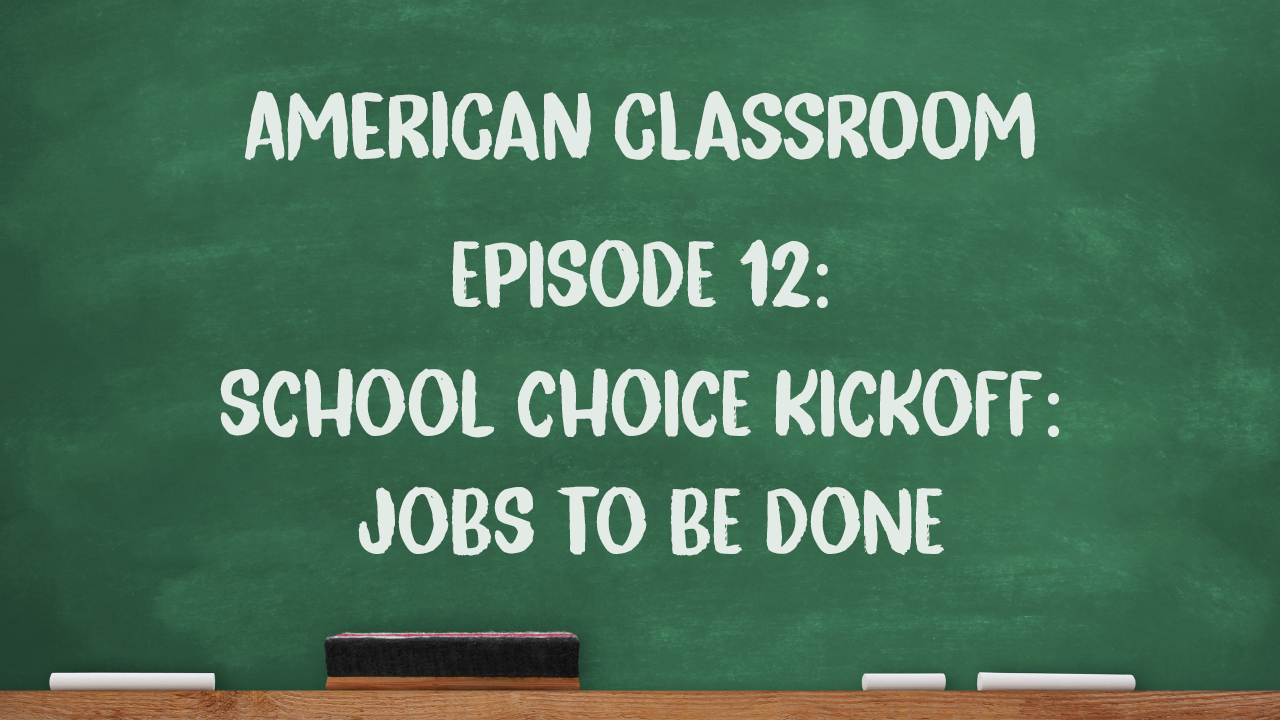
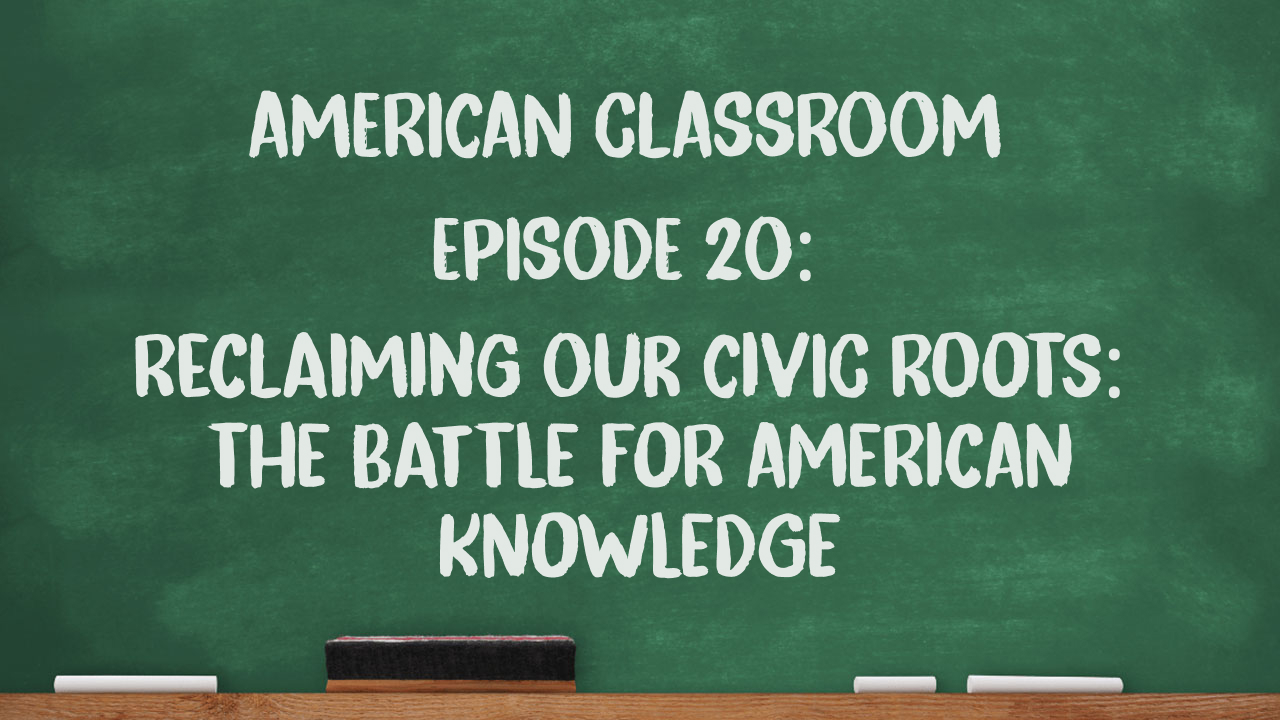
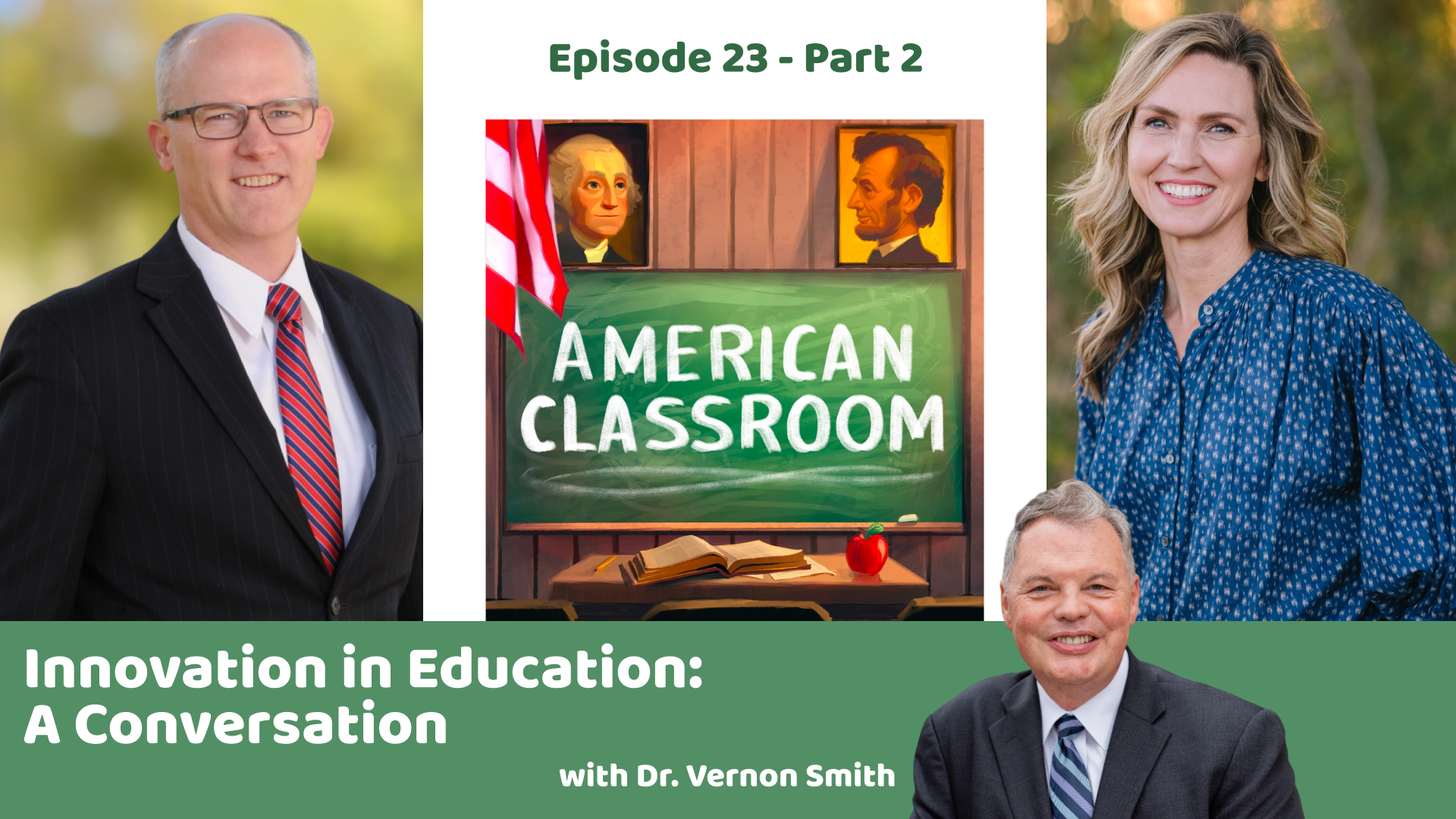
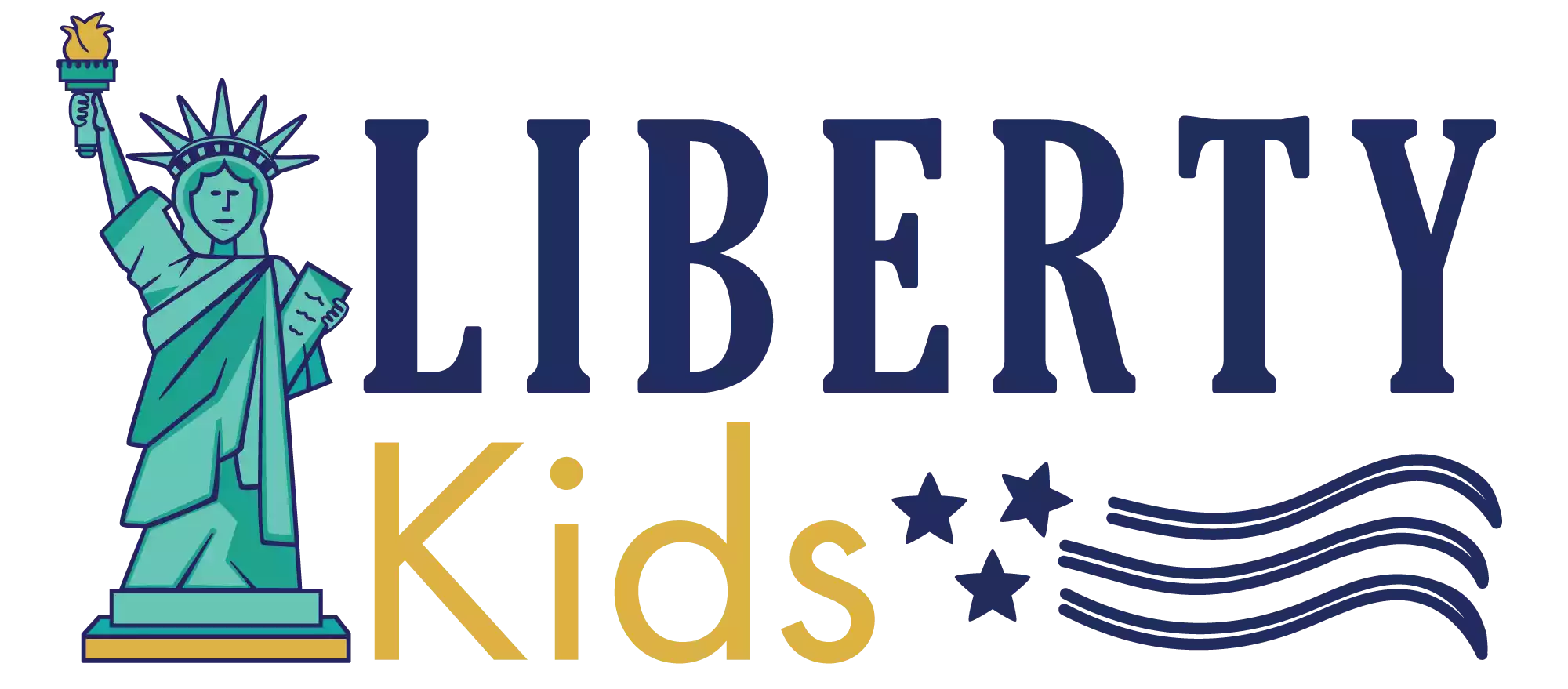
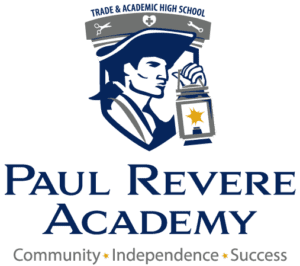

Comments